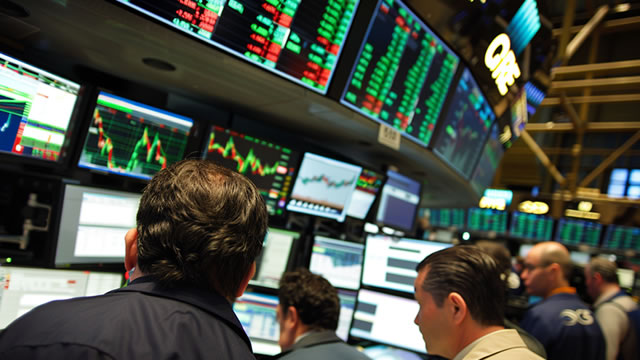The S&P 500: Trapped in a Trading Range
The S&P 500, an essential benchmark for the U.S. stock market, has been displaying a lackluster performance in recent months. This broad stock market index, which measures the stock performance of 500 large companies listed on the NYSE or NASDAQ, has been stuck within a narrow trading range since early 2022. Let’s delve deeper into this phenomenon.
What is a Trading Range, and Why is the S&P 500 Stuck in One?
A trading range is a price range where the stock price fluctuates but fails to make a substantial breakthrough. In the case of the S&P 500, this trading range is approximately 4,200 to 4,800 points. Several factors contribute to the index being trapped in this range:
- Geopolitical Tensions: Ongoing tensions between major global powers, such as the U.S. and China, have been a significant source of uncertainty for investors. These tensions can cause market volatility, making it challenging for the S&P 500 to break out of its trading range.
- Inflation Concerns: Inflation levels have been on the rise, leading to concerns about interest rate hikes. Higher interest rates can negatively impact stocks, especially those in the technology sector, which have seen significant growth in recent years.
- Economic Uncertainty: The ongoing COVID-19 pandemic and its economic implications continue to create uncertainty. Unforeseen events, such as lockdowns or new variants, can cause market volatility and hinder the S&P 500’s progress.
Impact on Individual Investors
For individual investors, a trading range in the S&P 500 can present both challenges and opportunities. On the one hand, a lack of significant price movement can make it difficult to realize substantial gains or losses. However, it also provides an excellent opportunity for long-term investors to dollar-cost average their investments and potentially buy stocks at lower prices.
Impact on the World
The S&P 500’s trading range can have far-reaching consequences for the global economy. For instance:
- Impact on Businesses: A prolonged trading range can lead to reduced confidence among businesses, potentially hindering investment and economic growth.
- Impact on Retirees: For retirees living off their investments, a trading range can make it challenging to generate sufficient income to maintain their lifestyle.
- Impact on Global Markets: A trading range in the S&P 500 can create uncertainty in other global markets, potentially leading to volatility and instability.
Conclusion
The S&P 500’s trading range is a phenomenon that has been capturing the attention of investors and financial analysts alike. While it presents challenges for those seeking substantial gains or losses, it also offers opportunities for long-term investors. Furthermore, its impact extends beyond the U.S. stock market, affecting businesses, retirees, and global markets. As we continue to monitor the situation, it is essential to stay informed and adapt to the ever-changing market conditions.
Keep in mind that investing always comes with risks, and it is essential to diversify your portfolio and consult with a financial advisor before making any significant investment decisions. By staying informed and proactive, you can navigate the market’s ups and downs with confidence.





